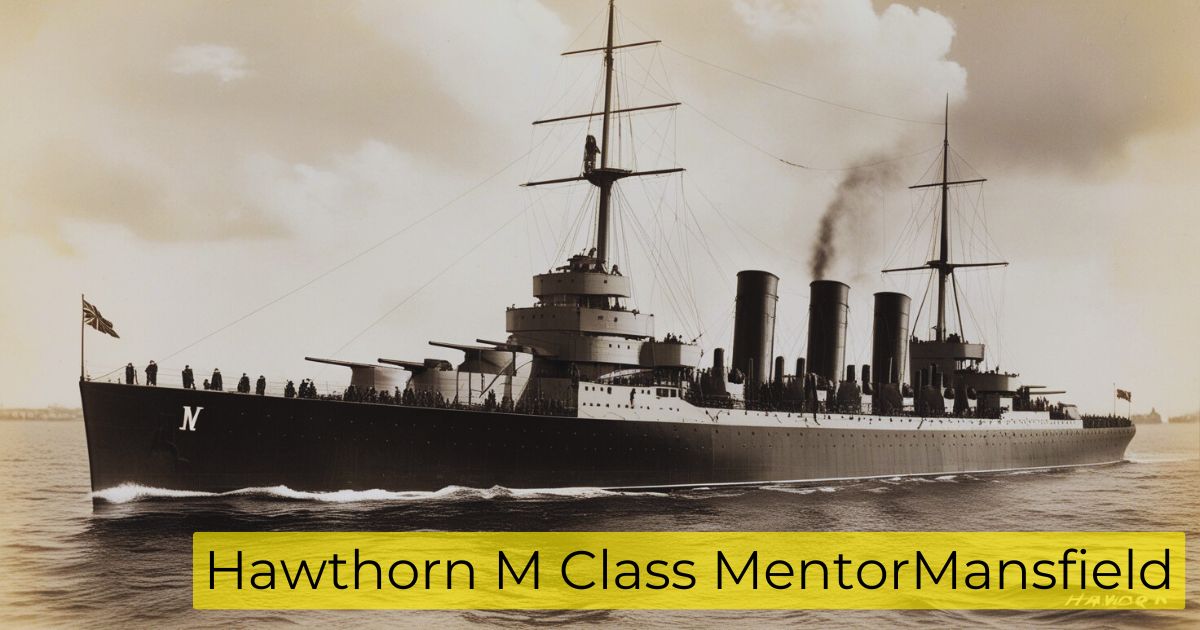The Hawthorn M Class MentorMansfield destroyers stand as a key chapter in naval warfare history. Built in the early 20th century, these ships were part of the Royal Navy’s push to strengthen its fleet during World War I. They were known for their speed, firepower, and innovative design. The M Class ships played a crucial role in countering U-boats and supporting larger vessels, changing naval tactics during the war. In this article, we’ll explore the history, design, and lasting legacy of these remarkable destroyers.
History of the Hawthorn M Class MentorMansfield Destroyers
The Hawthorn M Class MentorMansfield destroyers were developed as part of the Royal Navy’s efforts to enhance its fleet during World War I. Built primarily by Hawthorn Leslie, these destroyers focused on speed and maneuverability, critical for engaging German U-boats. Constructed between 1915 and 1917, the ships were designed to meet the demands of modern naval warfare. The name “MentorMansfield” likely refers to the specific line of ships produced by this shipyard, further establishing its role in naval history.
The destroyers were swiftly deployed during the conflict, contributing significantly to the Royal Navy’s ability to dominate the seas and protect vital supply routes. Their ability to rapidly respond to enemy threats made them invaluable assets in the war effort.
The Role of Hawthorn M Class MentorMansfield in World War I
The Hawthorn M Class MentorMansfield destroyers played a pivotal role in the Royal Navy’s operations during World War I. These ships primarily engaged in anti-submarine warfare, a critical task given the destructive power of German U-boats. With their speed and agility, they could quickly chase down and destroy enemy submarines, preventing attacks on merchant vessels.
Apart from hunting U-boats, these destroyers also provided protection for convoys and defended larger capital ships during battles. Their swift response to threats allowed them to play an essential role in safeguarding the Royal Navy’s strategic positions and ensuring the safe passage of vital supplies across the Atlantic.
Design and Technical Specifications of the Hawthorn M Class MentorMansfield
The Hawthorn M Class MentorMansfield destroyers were renowned for their innovative design and technical prowess. These ships featured steam turbine engines that allowed them to reach speeds of up to 30 knots—an impressive feat for the time. The high speed enabled them to engage in hit-and-run tactics, quickly pursuing or evading enemy forces.
These destroyers were equipped with a mix of weaponry, including quick-firing 4-inch guns, torpedo tubes, and depth charges. This armament allowed the M Class ships to engage both surface vessels and submarines. Their compact size made them highly maneuverable, but it also limited their range. Nonetheless, their speed and firepower made them formidable adversaries in naval combat.
Hawthorn M Class MentorMansfield: Speed and Maneuverability
The speed of the Hawthorn M Class MentorMansfield destroyers was one of their greatest advantages. Capable of reaching 30 knots, these ships could easily outpace most other vessels in their class. This speed allowed the M Class ships to execute rapid maneuvers in battle, making them highly effective at both offensive and defensive operations.
Their agility was crucial for both engaging U-boats and defending larger ships. The ability to quickly reposition and evade enemy fire made them indispensable in convoy protection and naval skirmishes. The M Class destroyers demonstrated how speed could shift the balance of naval warfare, providing a clear edge in both attack and defense.
Armament and Combat Capabilities of Hawthorn M Class MentorMansfield
The Hawthorn M Class MentorMansfield destroyers boasted impressive firepower, giving them the ability to engage multiple targets in diverse combat scenarios. Equipped with 4-inch quick-firing guns, the ships could deliver rapid-fire support in close-quarters combat. They also carried torpedo tubes for launching surprise attacks against enemy vessels, especially larger ships.
For anti-submarine warfare, the M Class ships were equipped with depth charges, which became essential in hunting U-boats. These ships were highly versatile, allowing them to take on both surface vessels and submerged threats effectively. The combination of these weapons, along with their speed, made them highly capable in any naval engagement.
Hawthorn M Class MentorMansfield: Naval Innovations
The Hawthorn M Class MentorMansfield destroyers represented significant innovations in naval design. The use of steam turbines was one of the key advancements, providing the ships with exceptional speed and maneuverability. This technology influenced future naval vessel design, changing the way destroyers were constructed in the decades that followed.
The M Class ships were also early adopters of depth charges, marking a shift in tactics for anti-submarine warfare. These destroyers demonstrated the importance of specialized weapons for combating the threat of submarines, and their success in this area set the standard for naval destroyers in later years.
Hawthorn M Class MentorMansfield and Its Crew
The success of the Hawthorn M Class MentorMansfield destroyers relied not just on their design but also on the skill and bravery of their crews. Life aboard these destroyers was often grueling. Sailors worked long hours in cramped conditions, and their daily routines were punctuated by the constant threat of enemy attack.
The crews had to be highly trained, mastering gunnery, torpedo operations, and anti-submarine tactics. Leadership aboard these ships was crucial, as commanding officers had to make swift decisions in high-pressure situations. The camaraderie among the crew was strong, forged by shared experiences in the heat of battle. This bond helped them stay effective in their roles, contributing to the M Class ships’ operational success.
The Legacy of the Hawthorn M Class MentorMansfield Destroyers
The Hawthorn M Class MentorMansfield destroyers left a lasting mark on naval warfare. Their design and operational success influenced future destroyer classes, particularly in the areas of speed, agility, and anti-submarine warfare. The innovations introduced by these ships laid the groundwork for future advancements in naval engineering and tactics.
Even after World War I ended, the M Class ships continued to influence naval strategy and ship design. Their impact is still felt today, as the principles they established remain integral to modern naval operations. The Hawthorn M Class MentorMansfield ships continue to be studied and admired by naval historians and enthusiasts for their role in shaping the future of maritime warfare.
Hawthorn M Class MentorMansfield in Modern Culture
Today, the legacy of the Hawthorn M Class MentorMansfield destroyers lives on in literature, film, and museums. Their contributions to World War I have been documented in numerous books and documentaries, ensuring their place in history. The ships have also been featured in naval exhibitions and war memorials, where they serve as a reminder of the bravery of their crews and the advancements in naval technology.
The continued fascination with these destroyers reflects their enduring impact on both naval warfare and popular culture. Their stories inspire new generations to explore the rich history of the Royal Navy and the technological innovations that emerged during the First World War.
Conclusion
The Hawthorn M Class MentorMansfield destroyers were more than just warships—they were symbols of innovation and resilience. Their role in World War I, paired with their groundbreaking design and tactical significance, ensured that they left an indelible mark on naval history. The legacy of the M Class ships continues to influence naval design and strategy, providing valuable lessons for future generations.
These ships embodied the spirit of naval warfare during the early 20th century, demonstrating the power of speed, agility, and technological innovation in shaping the future of maritime combat. Their place in history remains secure, serving as a testament to the enduring impact of naval engineering on the course of warfare.









